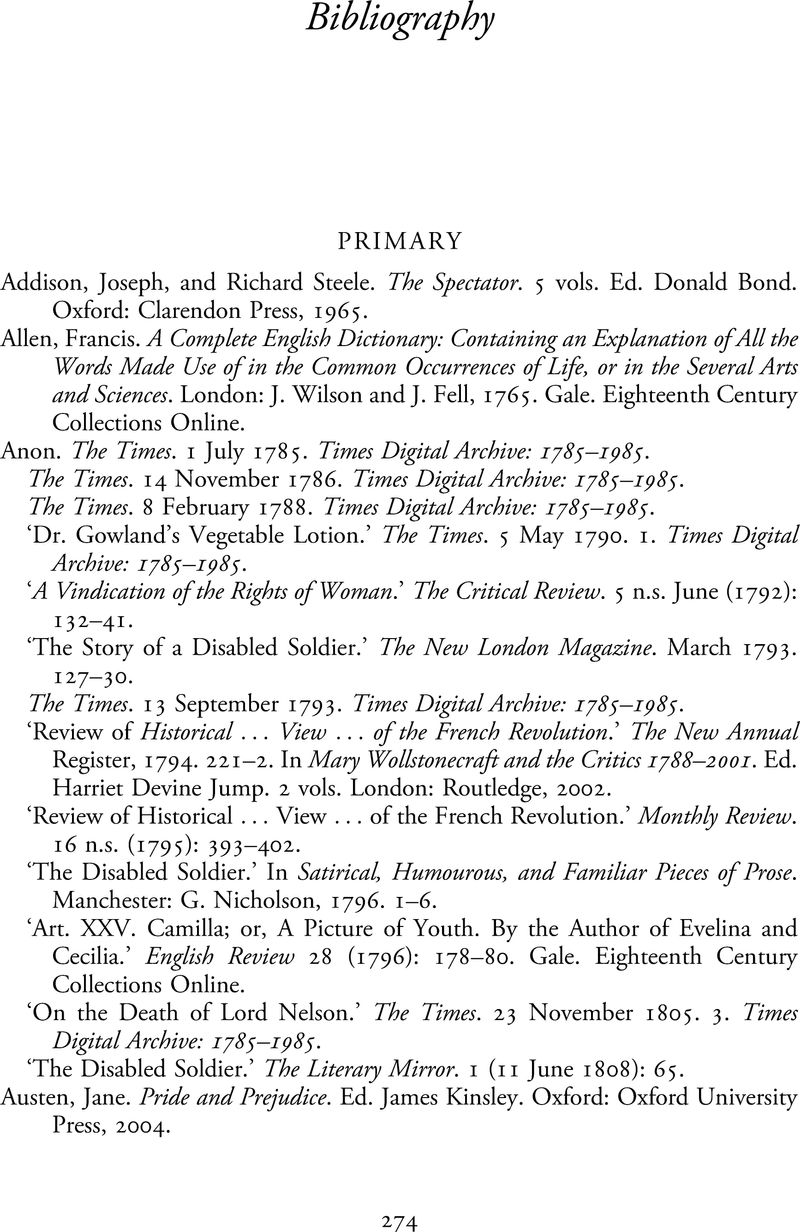Book contents
- Physical Disability in British Romantic Literature
- Cambridge Studies in Romanticism
- Physical Disability in British Romantic Literature
- Copyright page
- Dedication
- Contents
- List of Illustrations
- Acknowledgements
- Introduction
- Part I Politics of Ability
- Part II Aesthetics of Deformity
- Conclusion
- Appendix Dictionary Definitions of ‘Disability’ and ‘Deformity’
- Notes
- Bibliography
- Index
- Cambridge Studies in Romanticism
- References
Bibliography
Published online by Cambridge University Press: 09 November 2020
- Physical Disability in British Romantic Literature
- Cambridge Studies in Romanticism
- Physical Disability in British Romantic Literature
- Copyright page
- Dedication
- Contents
- List of Illustrations
- Acknowledgements
- Introduction
- Part I Politics of Ability
- Part II Aesthetics of Deformity
- Conclusion
- Appendix Dictionary Definitions of ‘Disability’ and ‘Deformity’
- Notes
- Bibliography
- Index
- Cambridge Studies in Romanticism
- References
Summary

- Type
- Chapter
- Information
- Physical Disability in British Romantic Literature , pp. 274 - 299Publisher: Cambridge University PressPrint publication year: 2020



